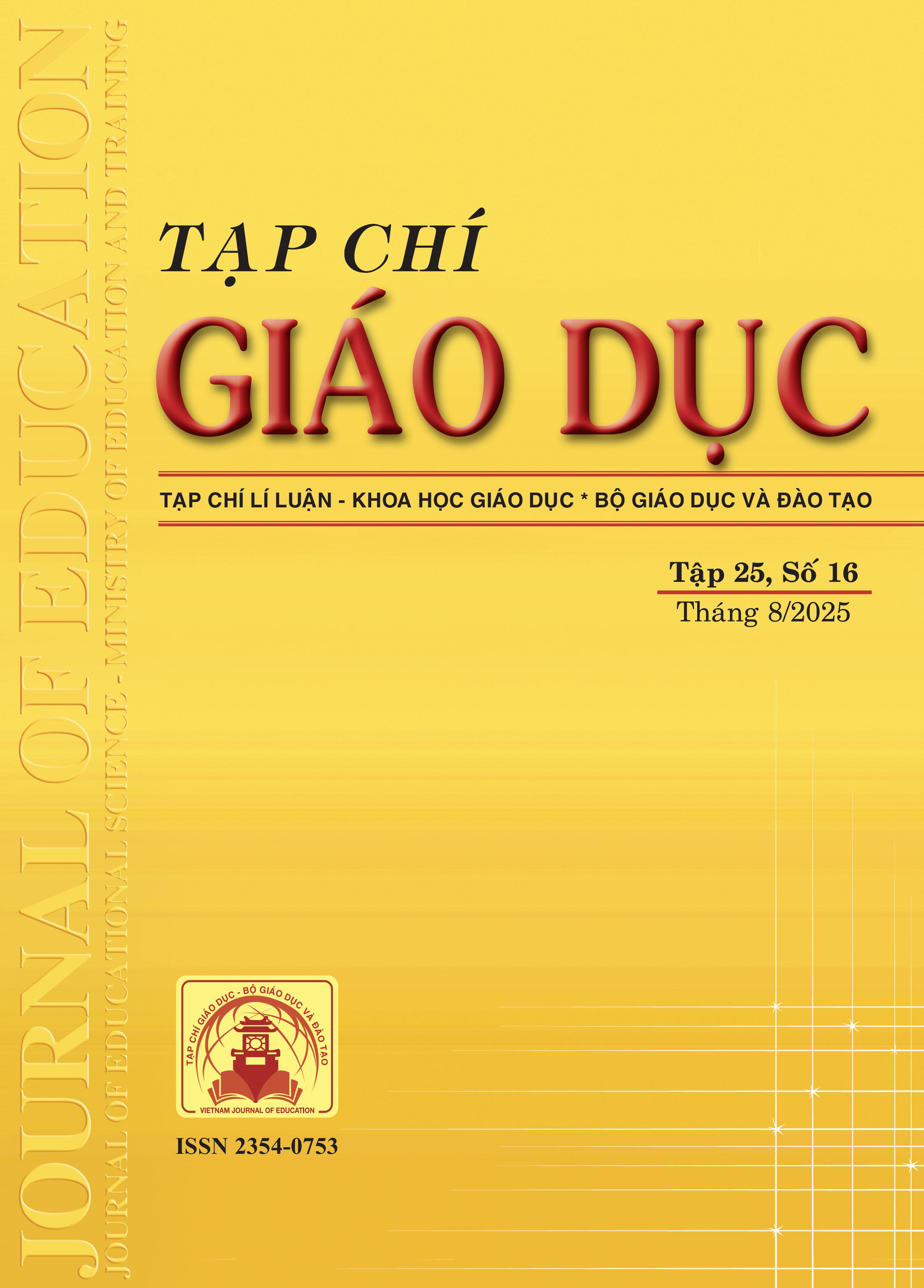Khám phá các yếu tố ảnh hưởng đến năng lực toán học của học sinh Việt Nam qua dữ liệu PISA 2022: Phương pháp học máy và giải thích bổ sung theo giá trị SHapley
Tóm tắt
Mathematical competency is crucial in the 21st century. This study utilizes machine learning (ML) and SHAP (SHapley Additive exPlanations) to analyze PISA 2022 data, aiming to understand the factors influencing Vietnamese students’ mathematical competence. It is found that XGBoost has emerged as the optimal predictive model. Self-efficacy in mathematics, the number of math teachers at school, and career orientation are identified as key positive factors. Conversely, frequent exposure to math exercises, excessive physical activity, and math anxiety negatively impact performance. Noticeably, the influence of these factors varies among individuals. This study demonstrates the effectiveness of ML and SHAP in analyzing large scale educational data. The findings highlight the importance of math teacher professional development, career guidance support, and fostering students’ self-confidence in mathematics. Personalized learning emerges as a promising approach. Future research should expand the data scope, consider models suitable for multilevel data, and focus on causal analysis.
Tài liệu tham khảo
Barra, C., & Boccia, M. (2022). What matters in educational performance? Evidence from OECD and non-OECD countries. Quality & Quantity, 56(6), 4335-4394. https://doi.org/10.1007/s11135-022-01322-y
Bernardo, A. B. I., Cordel, M. O., Calleja, M. O., Teves, J. M. M., Yap, S. A., & Chua, U. C. (2023). Profiling lowproficiency science students in the Philippines using machine learning. Humanities and Social Sciences Communications, 10(1), 192. https://doi.org/10.1057/s41599-023-01705-y
Breda, T., Jouini, E., & Napp, C. (2023). Gender differences in the intention to study math increase with math performance. Nature Communications, 14(1), 3664. https://doi.org/10.1038/s41467-023-39079-z
Brow, M. V. (2019). Significant predictors of mathematical literacy for top‐tiered countries/economies, Canada, and the United States on PISA 2012: Case for the sparse regression model. British Journal of Educational Psychology, 89(4), 726-749. https://doi.org/10.1111/bjep.12254
Holmes, W., Bialik, M., & Fadel, C. (2023). Artificial intelligence in education (pp. 621-653). https://doi.org/10.58863/20.500.12424/4276068
Huang, Y., Zhou, Y., Chen, J., & Wu, D. (2024). Applying Machine Learning and SHAP Method to Identify Key Influences on Middle-School Students’ Mathematics Literacy Performance. Journal of Intelligence, 12, 93. https://doi.org/10.3390/jintelligence12100093
Lundberg, S., & Lee, S.-I. (2017). A Unified Approach to Interpreting Model Predictions. https://doi.org/10.48550/arXiv.1705.07874
OECD (2009). PISA Data Analysis Manual: SPSS, Second Edition. https://doi.org/10.1787/9789264056275-en
OECD (2016). PISA 2015 Results in Focus. 67. https://doi.org/10.1787/aa9237e6-en
OECD (2019). PISA 2018 Results (Volume I). https://doi.org/10.1787/5f07c754-en
Wang, X., Houang, R. T., Schmidt, W. H., & Kelly, K. S. (2024). Relationship Between Opportunity to Learn, Mathematics Self-Efficacy, and Math Performance: Evidence from PISA 2012 in 63 Countries and Economies. International Journal of Science and Mathematics Education, 22(8), 1683-1708.
Zhao, Y., & Ding, C. (2019). The association between students mathematic knowledge and factors related to students, parents, and school: A cross-cultural comparison study. International Journal of Educational Research, 93, 210-217. https://doi.org/10.1016/j.ijer.2018.11.006
Tải xuống
Đã Xuất bản
Cách trích dẫn
Số
Chuyên mục
Giấy phép

Tác phẩm này được cấp phép theo Ghi nhận tác giả của Creative Commons Giấy phép quốc tế 4.0 .












